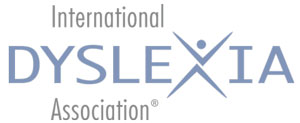DOWNLOAD
Dyslexia is often defined as a language-based reading disability. What is the nature of this language disability and how is it related to other difficulties in language development? This fact sheet answers these questions as well as others related to oral language impairments and dyslexia.
What is oral language?
Oral language refers to the knowledge and skills that we use to produce and understand spoken language. Language knowledge and skills also serve as the foundation for learning to read and write. Oral language is composed of five main components:
- Phonology (understanding and use of the speech sounds in words)
- Morphology (understanding and use of meaningful word parts, e.g., pre, un, ion)
- Vocabulary or Semantics (understanding and use of the meaning of words)
- Syntax (understanding and use of the grammatical aspects of language)
- Pragmatics (understanding and use of language in various contexts)
Although children acquire most aspects of oral language during early childhood, their language learning lasts well into adolescence and adulthood. Children continue to add to their vocabulary and to their repertoire of language usage in different contexts. Much of this latter language learning is influenced by children’s academic and literacy experiences.
What are oral language impairments?
Children have a natural gift for language learning and most children acquire oral language with little difficulty. However, some children have problems in language development and demonstrate impairments in their use and/or understanding of spoken language. Children may have difficulties pronouncing words, acquiring vocabulary, and/or learning the grammatical rules of language. When these deficits are severe and unexpected, children may be diagnosed as having a specific language impairment (SLI; Leonard, 2014). Whereas the environment may play a role in language problems, these difficulties are the primary result of neurological and genetic factors.
What oral language impairments are associated with dyslexia?
Children with dyslexia most often have the following problems with the phonological component of language:
- Phonological awareness (explicit awareness of the sounds of language)
- Phonological memory (memory for the speech sounds in pronunciations of labels (e.g., letter names), parts of words, or entire words)
- Phonological retrieval (word and name retrieval)
- Phonological production (pronunciation of multisyllabic and phonologically complex words, e.g., aluminum, specific)
Individuals with dyslexia may also exhibit problems in language that extend to vocabulary and grammatical development. In fact, research shows that the inclusion of deficits in oral language beyond the phonological component may place children at a higher risk for dyslexia. This work indicates that children with a family history of dyslexia are more likely to develop dyslexia themselves if they have preschool problems in vocabulary and/or syntax in addition to difficulties in phonology (Moll, Loff, & Snowling, 2013; also see Catts, McIlraith, Nielsen, & Bridges, 2017).
How is dyslexia related to SLI?
Whereas dyslexia and SLI can co-occur, these conditions are separate developmental disabilities (Catts, Adlof, Hogan, & Weismer, 2005). As stated, children with dyslexia may have some difficulties in oral language (beyond phonology) but only when these difficulties are severe would children also be diagnosed with SLI. Similarly, children with SLI are only considered to have dyslexia when they demonstrate significant difficulties in word reading and spelling.
How are oral language impairments related to other reading disabilities?
Oral language impairments also place children at risk for difficulties in reading comprehension. Because oral language is the foundation for written language, a limited vocabulary and/or problems with morphology and syntax can cause difficulties in deriving meaning from written text. Children with a specific comprehension impairment (e.g., those with comprehension problems but normal word reading abilities) have often been shown to have a range of problems in oral language (Nation, Cocksey, Taylor, & Bishop, 2010).
Implications for early identification and intervention
Children who are late to talk or who show delays in oral language development (especially accompanied by a family history of dyslexia or SLI) are at heightened risk for reading disabilities (Lyytinen, Eklund, & Lyytinen, 2005). Early problems in the phonological aspects of language may also be indicative of risk for dyslexia. Children at risk can benefit from early intervention directed at emergent literacy and oral language. The latter oral language instruction may involve teaching vocabulary as well as the use of language in different contexts (e.g., story grammar). For additional information about oral language problems and SLI see
https://www.youtube.com/watch?v=AFFWh9y6Ck0. Certified speech-language pathologists can also provide information concerning oral language problems and their relationship to reading difficulties.
References
Catts, H. W., McIlraith, A., Bridges, M., & Nielsen, D. (2017). Viewing a phonological deficit within a multifactorial model of dyslexia. Reading and Writing: An Interdisciplinary Journal, 30, 613–629.
Catts, H., Adlof, S., Hogan, T., & Ellis Weismer, S. (2005). Are specific language impairment and dyslexia distinct disorders? Journal of Speech-Language-Hearing Research, 48, 378–1396.
Leonard, L. (2014). Children with specific language impairment, 2nd edition. Cambridge, MA: MIT Press.
Lyytinen, P., Eklund, K., & Lyytinen, H. (2005). Language development and literacy skills in late talking toddlers with and without familial risk for dyslexia. Annals of Dyslexia, 55, 166–192.
Moll, K., Loff, A., & Snowling, M. J. (2013). Cognitive endophenotypes of dyslexia. Scientific Studies of Reading, 17, 385–397.
Nation, K., Cocksey, J., Taylor, J. S., & Bishop, D. V. (2010). A longitudinal investigation of early reading and language skills in children with poor reading comprehension. Journal of Child Psychology and Psychiatry, 51, 1031–1039.
The International Dyslexia Association (IDA) thanks Hugh Catts, Ph.D., and Elsa Cárdenas-Hagan, Ed.D., CCC/SLP, CALT-QI, CDT, for their assistance in the preparation of this fact sheet.
The International Dyslexia Association (IDA). IDA encourages the reproduction and distribution of this fact sheet.
If portions of the text are cited, appropriate reference must be made. Fact sheets may not be reprinted for the purpose of resale. © Copyright 2020. The International Dyslexia Association (IDA). For copyright information, please click here.

